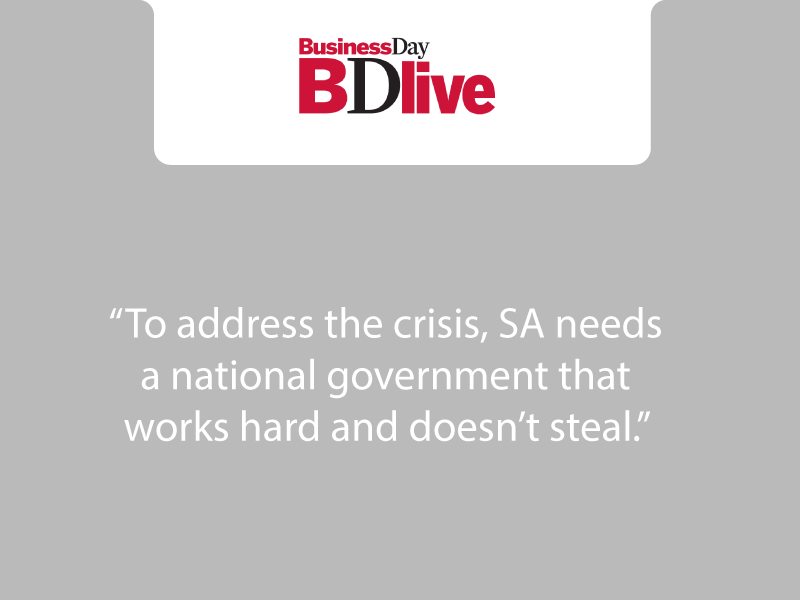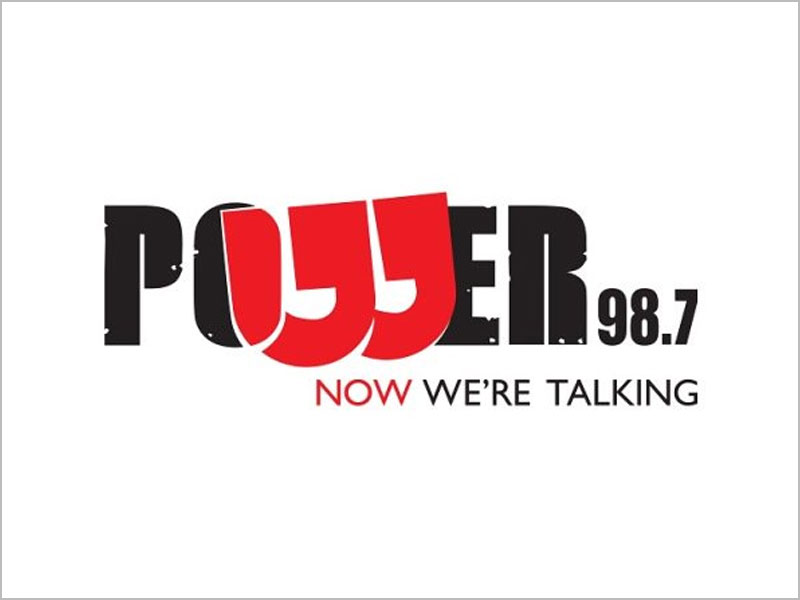 Finance Minister Tito Mboweni delivers his budget on 26 February 2020 at a time when South Africa is in a state of fiscal purgatory. A glimmer of hope is that he may yet surprise us by taking the axe to state-owned enterprises and curbing the public service wage bill.
Finance Minister Tito Mboweni delivers his budget on 26 February 2020 at a time when South Africa is in a state of fiscal purgatory. A glimmer of hope is that he may yet surprise us by taking the axe to state-owned enterprises and curbing the public service wage bill.
Tabling the medium-term budget policy statement (MTBPS) in October 2019, Finance Minister Tito Mboweni said that hope is not a strategy. Now, days before he delivers the 2020 budget, we have to ask whether he has something more than this truism to offer.
Unfortunately, there is little reason to believe that the government will announce plans that have any prospect of delivering the country from the fiscal purgatory into which their policies have led us.
The October 2019 MTBPS sets out in broad outline what the minister of finance and the Cabinet are thinking about key macro-economic variables: how fast the economy is growing, how much money government needs to run its operations and achieve its goals, how much tax it will collect, and, to the extent that there is a gap between taxes and spending, how much it will have to borrow.
For those who don’t remember, the MTBPS painted a very dire picture: the ratio of debt to GDP, which had been as low as 30% in 2008, would exceed 60% in 2020 and would continue to rise past 80% in 2027, with no prospect of its stabilising even then.
Why such a grim picture? The simple answer is because the gap between revenue and expenditure was going to continue to rise even as the economy stagnated. Thus, the MTBPS estimated that by 2022/23 (the outer year of the medium-term expenditure framework), annual spending would have risen by R334-billion while tax revenues will have increased by only R269-billion. The implication of this is that annual borrowing will rise from about R320-billion to close to R400-billion. Because growth is so slow, the inevitable result is a higher ratio of debt to GDP.
Since then, to slightly misquote Emperor Hirohito’s message to his subjects after the US dropped two atomic bombs on Japan, “the situation has developed not necessarily to our advantage”.
Growth is now expected to be considerably slower than was expected in October 2019. The Reserve Bank has lowered its growth forecasts for 2019 to 0.4% and for 2020 to 1.2%, while tax collection has continued to disappoint even relative to the reduced expectations of four months ago.
And expenditure keeps rising: demands on the fiscus that had not been fully factored into spending plans have materialised (such as the multi-billion rand bailout of SAA, the apparent failure of large numbers of public servants to take up the voluntary severance package). There is a wide expectation, therefore, that the budget deficit will be closer to 7% of GDP this year than the 6.2% pencilled in four months ago.
Sadly, the MTBPS failed to offer much on how to stem the flow of red ink. Growth trends, spending trajectories and revenue estimates were presented as if they were natural phenomena, immutable and impervious to change through the choices made by policy-makers.
The closest the MTBPS came to offering a strategy was the rather lame promise that between its tabling and the tabling of the budget this month, some R150-billion (less than 2.5%), would be squeezed out of the R6.2-trillion that government expected to spend over the next three years.
Notwithstanding this commitment, no one seems to think that the budget will actually deliver even this.
One reason is the insatiability of state-owned enterprises (SOEs), whose financial needs government appears to be incapable of accurately estimating. In addition, the government does not appear to have found a way to break it to public servants that the rapidity of the increase in their remuneration is unsustainable in the context of continued weak economic growth.
This is a real problem. Macroeconomic policy is exceptionally tricky in a chronically slow-growing economy and no choice is painless, or offers only unambiguous benefits. But when Treasury and government say they are going to cut spending and then fail to deliver those cuts, their credibility suffers. And as their credibility declines, so too does their creditworthiness.
It is not easy to slow spending growth. However, to govern is to choose, and it is our policy choices that are the source of the problem. This is especially the case for those policies relating to public sector remuneration and the expectations that have been created, as well as the failure to impose hard budget constraints on departments, public entities, and, most importantly, SOEs.
The result is that even when spending growth has been moderated, these reductions have fallen on spending where the short-term pain seemed smallest: maintenance budgets, for example, and spending on the goods and services (such as medicines and school textbooks), that public servants need to do their jobs effectively. The effect of this is apparent to all with Eskom’s rolling blackouts, a key cause of which has been inadequate attention to maintenance for more than a decade.
All that being said, there are a few glimmers of sparks that might be fanned into tiny candles of hope that we may see something at least a little more constructive than the MTBPS was able to offer. The most obvious reason for this is that one member of the Tripartite Alliance – Cosatu – appears to have finally realised just how deep our crisis is.
True, its proposed solution – a GEPF-funded bailout of Eskom – is the wrong one, but if workers recognise the need to make some sacrifices, perhaps the one they might consider is a deceleration of remuneration growth?
In addition, the agonies through which SAA is going must be eye-opening for the other SOEs. Eskom is too important to be allowed to fail, but Denel isn’t. Nor are SA Express and a range of other entities and companies that are struggling to pay their bills. That SAA may not survive the summer is something that ought to be sending shivers up the spines of boards, staff and creditors. The minister ought to embrace this: If he can find a way to shut SAA relatively cheaply, it would be a massive signal to investors that the government is getting serious.
So, while it seems appropriate not to be overly optimistic about the extent to which the budget will signal a departure from current trends, there are some signs that change may, in fact, come.
So, what would constitute a genuinely positive surprise? Two possibilities present themselves. The first is something concrete about the restructuring of public entities and SOEs: Can the minister set timeframes for rationalisation and restructuring? Can he offer, even in the broadest possible terms, an estimate on how much he’d hope to raise by selling off some assets?
The second would be a commitment to slowing the rate of remuneration in the public sector. Obviously, it would be far better if this commitment was already reflected in an agreement with organised labour, but even if all he can offer is some sign that government has drawn a line in the sand and has begun to engage labour on it, it would imply a very welcome level of seriousness.
Low expectations ought to mean that government can exceed them reasonably easily. We have few reasons for optimism. But it is long past time for Mboweni and the Cabinet to start walking the walk.
Ann Bernstein is head of the Centre for Development and Enterprise. This article builds on the CDE report, Running out of Road, 2019.
Article published by the Daily Maverick




